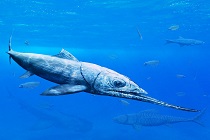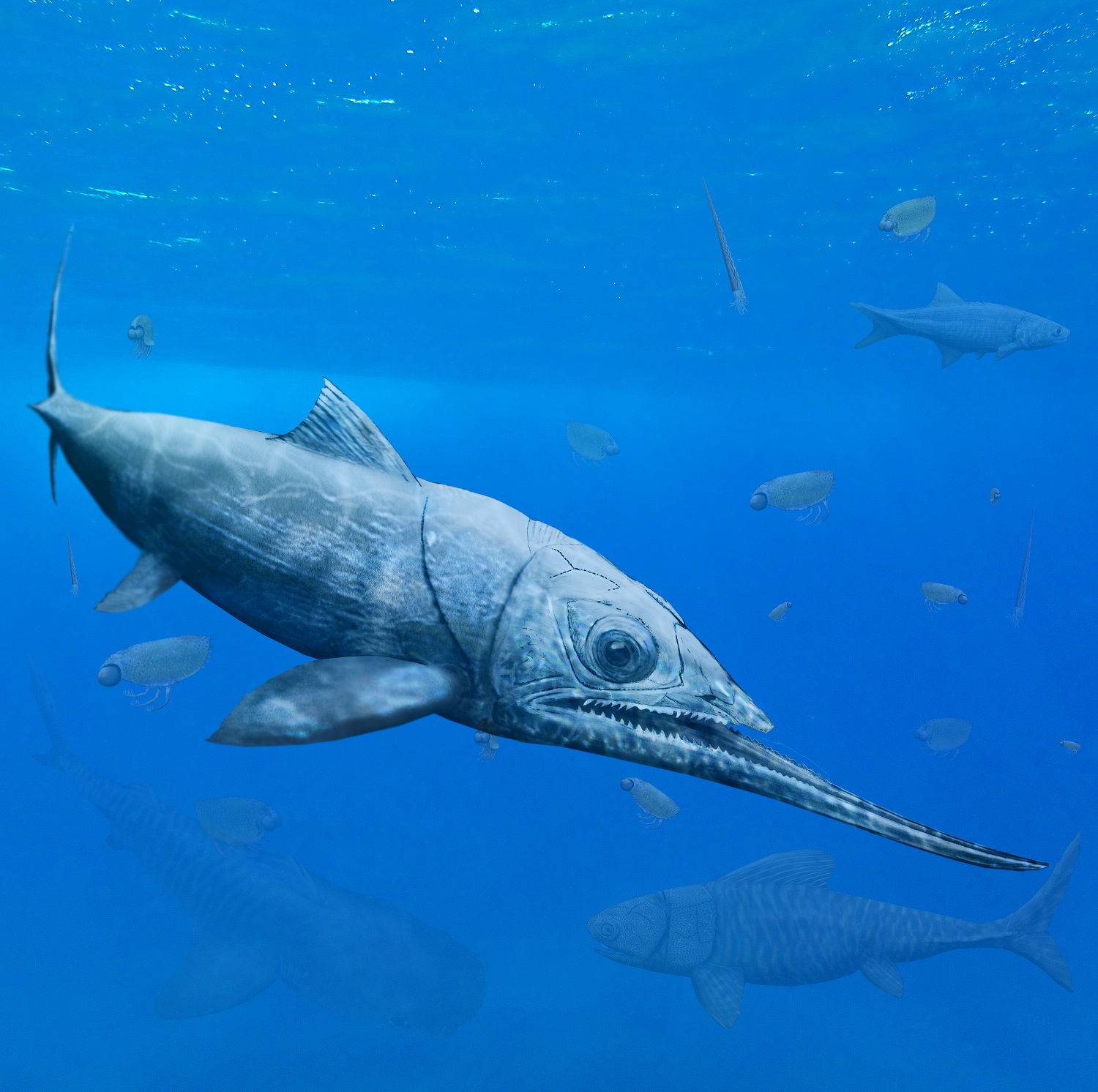 The scientific journal Royal Society Open Science has just published an article on the discovery and findings of alienacanthus, an armoured fish from the Devonian period.
The scientific journal Royal Society Open Science has just published an article on the discovery and findings of alienacanthus, an armoured fish from the Devonian period.
The co-author of the scientific analysis is dr hab. Piotr Szrek of the Polish Geological Institute-NRI.
In 1957, in the Świętokrzyskie Mountains, the eminent Polish palaeontologist Julian Kulczycki discovered just two thin bones, which he recognised as alien-looking fin spines of a fish. He gave it the name Alienacanthus. Research on the fish's remains was undertaken in parallel by two teams, one French and one Polish, already in the 21st century.
- Members of the Polish team came across Moroccan specimens in the collection of the Muséum National d'Histoire Naturelle in Paris, which contained the same bone element, explains Dr. Piotr Szrek. - A few years ago, other team members found further specimens from Poland and Morocco. Collectively, the fossils have been identified as an armoured fish and highlight its uniqueness in the vertebrate world, he adds.
New fossils of a fish with an unusually elongated lower jaw, named Alienacanthus, give us a clue that jaws underwent very rapid changes soon after their formation. Alienacanthus belongs to the armoured fish group, which includes some of the first vertebrates with jaws.

Reconstruction of Alienacanthus (author: Christian Klug)
Armoured fish appeared in the early Silurian (about 440 million years ago) as small marine animals with a demersal lifestyle. They were an extremely diverse group, which should not be surprising given that they lived on Earth for another nearly 80 million years. Fossils still being discovered prove that early armoured fishes represent an̨ anatomical mosaic̨ that united this extinct group and the bony-skeletal fishes still living today.
Alienacanthus lived in the Devonian about 375 million years ago in the areas of present-day Poland and Morocco. How is this possible? The further back in time we go, the more the continents of our planet look different.
During the Late Devonian period, Poland was located on the north-eastern coast and Morocco on the southern coast of the vast Reik and Palaeotethys oceans. The presence of the same species on both sides indicates that migration took place on a large scale, despite fluctuations in sea level and, Alienacanthus himself enjoyed travelling.
Alienacanthus had a massive, rounded head, large eyes and, most surprisingly, these 'spikes' turned out to be its lower jaws! They were much longer than the upper jaws and remained uncovered by soft tissue. The teeth were sharp, slightly curved towards the back. This shape made it impossible for a victim hunted by Alienacanthus to escape. Its head and jaws alone were 80 cm, and the whole animal may have been 2.5-3 metres long!
In the Devonian, various groups of fish ruled the seas and oceans, including armoured fish that developed a wide range of body, head and jaw shapes. Alienacanthus not only enhances but also stretches this diversity to the limit with such a unique look. This jaw structure, twice as long as the skull, is unique among armoured fish and extremely rare in other living and fossil groups.
The front of their mouths was usually rounded, whereas in Alienacanthus it was sharp. In most animals, such a jaw projection is sometimes seen in the upper jaw, as in swordfish, or in both the upper and lower jaws, as in ichthyosaurs or gavials.
It is important to emphasise that the species name of this strange fish - Alienacanthus malkowski - given in 1957 by Julian Kulczycki, has been maintained and also includes well-preserved forms from Morocco. Commemoration of prof. Stanisław Małkowski, an employee of the Polish Geological Institute and later the first director of the Earth Museum of the Polish Academy of Sciences in Warsaw.
Full article on the Royal Society Open Science website: Extreme lower jaw elongation in a placoderm reflects high disparity and modularity in early vertebrate evolution.














 PGI-NRI offer
PGI-NRI offer Mineral resources of Poland
Mineral resources of Poland  Oil and Gas in Poland
Oil and Gas in Poland 




 Subscribe to RSS Feed
Subscribe to RSS Feed